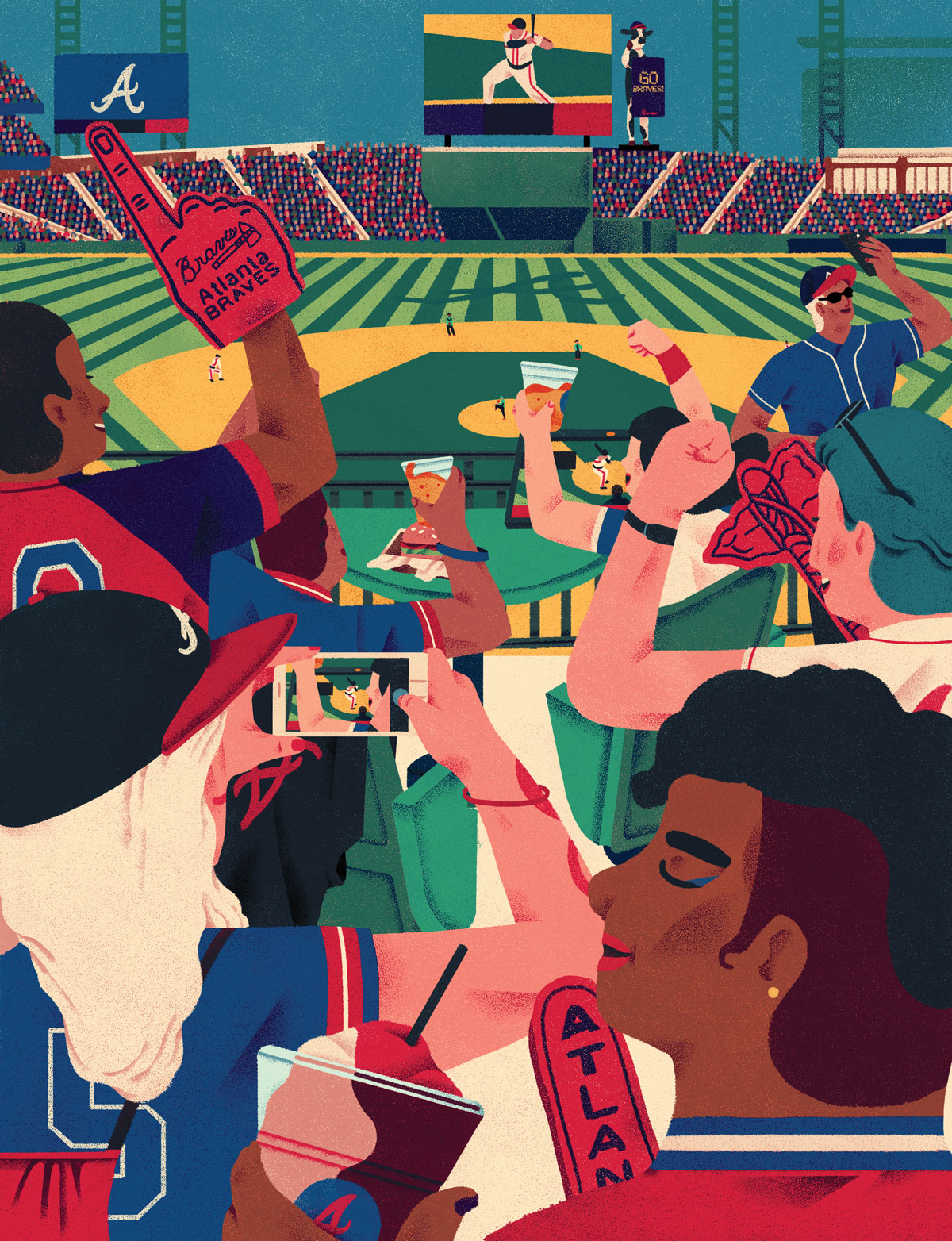TagsAtlanta BravesAtlanta Braves StadiumBattery AtlantaBravesLive! at the BatteryMLBSunTrust ParkTurner Field
Home 9 things to know about SunTrust Park
9 things to know about SunTrust Park
While the move to Cobb still chafes some fans, one thing is indisputable: the complex around SunTrust Park will be hopping. Nine things to know before you go.

Fifty-one years ago this month, Major League baseball debuted in the South as the fledgling Braves slogged through rain and mud to down the Mets 8-4. For 31 seasons the team played out of Atlanta-Fulton County Stadium, in the shadow of downtown, winning its first (and, so far, only) World Series championship. Last fall the Braves played their final game at Turner Field, the park that became their second home in 1997.
The team’s third act debuts at 7:35 p.m. on Friday, April 14, when the Braves host the San Diego Padres, raising the curtain on their new home, SunTrust Park. Few civic institutions evoke as much emotion as a major league sports franchise, and the Braves’ announcement in 2013 that they’d decamp to Cobb County, 15 miles up I-75, divided fans.
The Braves’ exodus to the ’burbs defies the recent trend of teams relocating to America’s urban cores. But the move puts the club closer to the high concentration of ticket-buying fans in the metro region’s northern reaches. And the new park allows for pregame and postgame revelry where the downtown stadium offered just parking lots.
“Whenever a team moves venues, there’s always understandably—and I think this is a positive—an emotional attachment and connection to that team and also to the [original] venue,” says Derek Schiller, the Braves president of business. “But we’ve created a facility where you’re going to be able to develop memories that are even better.”
Braves executives say SunTrust Park and its live-work-play component, the Battery Atlanta, will provide a game-day experience like Atlanta’s never seen: an intimate venue that echoes classic big league cathedrals—only with zip-lines, rooftop cabanas, an on-site brewery, and a Waffle House. Outside the gates, expect a master-planned mini-city that offers bountiful culinary and entertainment options.
On 60 wooded acres at the junction of interstates 75 and 285, the Braves and their partners embarked on a $1.3 billion project of unprecedented complexity and scale in 2014. They built a stadium and mixed-use development at the same time, borrowing ideas from parks across the country. Collectively, the Cobb County project encompasses 2.6 million square feet (roughly triple the size of Phipps Plaza), and all facilities should open on schedule throughout 2017.
Before the first shovel turned, the relocation process was fraught with logistical challenges and controversy, but the Braves insist the growing pains will be worth it. “We’d be lying to you if we didn’t tell you this was a lot harder than we thought,” says Braves president of development Mike Plant. “[But] it’s going to really transform this area.”
- What $1.3 billion bought the Braves (and what it cost Tim Lee)
- How did the land surrounding SunTrust Park stay undeveloped for so long?
- What you'll see when you walk into SunTrust Park
- Atlanta Braves games are scaling down in size—and hopefully in price
- If the Braves game's a snoozer, there's still plenty to do inside the stadium
- Parking, bridges, and tailgating at SunTrust Park
- You can live or work at SunTrust Park, thanks to the Battery Atlanta
- And the Battery will give you a lot more dining options, too
- Your guide to beating (or, at least, enduring) Atlanta Braves gameday traffic









